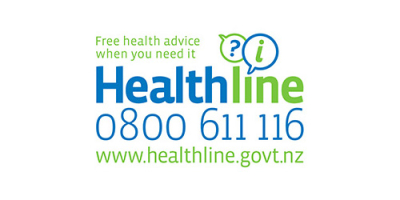Anthrax and acid leaks: That’s when the training kicks in
April 2017: It wasn’t even Easter but our emergency response systems were put to the test twice with a fatal road accident and a caving accident that triggered a complex rescue operation.
We asked Dr Chris Abbott, Sharon North and Pete Kara: What happens when you are alerted to a major incident and how do you cope?
How does a convoy of screaming sirens make you feel? For our emergency department staff, sirens are less of an alarm than a validation – by the time they hear sirens, they are already in emergency response mode.
When an event such as a major car accident occurs, our hospitals usually hear about it from the ambulance service first, via a text page or a radio call direct to ED.
The senior doctor, senior nurse and duty manager then meet to establish the level of response required.
Emergency specialist Dr Chris Abbott says they decide whether to activate ED overload, trauma teams or declare a major incident.
“If it’s a major incident we activate our plans and allocate roles and distribute task cards, coloured vests, clip boards and protective equipment,” Chris says. “Leadership, improvisation and flexibility are also the key to responding in real time.”
Major incident or business as usual?
Emergency Manager Pete Kara says that set criteria is applied to determine whether something is a ‘major incident’, requiring the activation of an incident management team (IMT), is or if it’s ‘business-as-usual’ in ED.
Pete says the main difference is that once the IMT is in place, it frees up staff so they can concentrate on looking after casualties.
“The incident team takes over and before casualties even arrive at the hospital everyone knows what their role is,” he says. “It triggers a communication tree for a ‘whole of hospital’ response and staff focus on predetermined tasks.”
For instance, the communications team will be called in to manage public information requirements. The person assigned the ‘logistics’ role will ensure additional surgeons or trauma teams are brought in, and theatre staff are alerted in case elective procedures have to be halted to allow for trauma surgery to take place.
Ready to receive
 Chris Abbott says any incident affects other patients because they may need to be physically moved or diverted to wards or to primary care. In addition, their care may be delayed or deferred whilst higher priority patients are attended to.
Chris Abbott says any incident affects other patients because they may need to be physically moved or diverted to wards or to primary care. In addition, their care may be delayed or deferred whilst higher priority patients are attended to.
“All patients become part of a major incident and we have to ensure resources are deployed to meet all needs – for patients with serious medical needs as well as trauma patients.
“The ambulance bay airlock is equipped with major incident, HAZMAT, Civil Defence and St John supply cupboards. There is also high-level personal protective equipment for staff, additional kits for burns, infectious outbreaks and field procedures available,” Chris says.
The training kicks in
Sharon North, Charge Nurse Manager of ED in Wairau, says it’s ‘all hands on deck’ during an emergency response.
“Everyone is really, really busy but we all know what we are doing because we have been trained,” she says.
ED staff complete Coordinated Incident Management System (CIMS) training and every year the Emergency Manager puts them through an exercise.
“We’ve faced many major incidents, such as the grounding of the Russian cruise ship Mikhail Lermontov in the Marlborough Sounds, and diving and boating accidents,” Sharon says.
“The training kicks in. We have a great team and they are very experienced.”
Staying calm, cool and focussed
Emergency Manager Pete Kara is responsible for ensuring our healthcare facilities and services are prepared, and that we can respond and recover effectively in an emergency.
Preparing for an emergency is one thing, but how does he remain calm during crisis?
“I think it comes from my training and my military background,” he says. “When you have been working with chemical and live weapons that can easily take your birthday away, you learn to focus and prioritise very quickly.”
He says it’s the same for our medical and emergency staff. They rely on their training to get them through whatever they are facing.
“It is learned behaviour, requiring a methodical approach, where patients are triaged and they work through what is in front of them,” he says. “When people need our help we have to work as a team and have each other's back.”
After an incident, staff generally have an informal debrief and unwind over a cuppa. In some cases a formal debrief or review is held later to explore what worked well and address any areas that could be improved on. Staff are offered counselling in some circumstances.
Chris Abbott says role of the social worker in ED, assisting with patients, relatives and staff, is invaluable. He says a simple message of thanks to staff also makes a big difference.
Some of the more unusual incidents our emergency staff have been involved in:
- Anthrax scare (30 patients)
- Motueka plane crash (6 patients)
- Radiology acetic acid leak (14 patients)
- Chipmunks alkaline vapour leak (12 patients)
- Petrol tanker roll over (8 patients)
- Chlorine gas leak (5 patients)
- Cruise ship grounding, hospital roof collapse and ICU evacuation.





